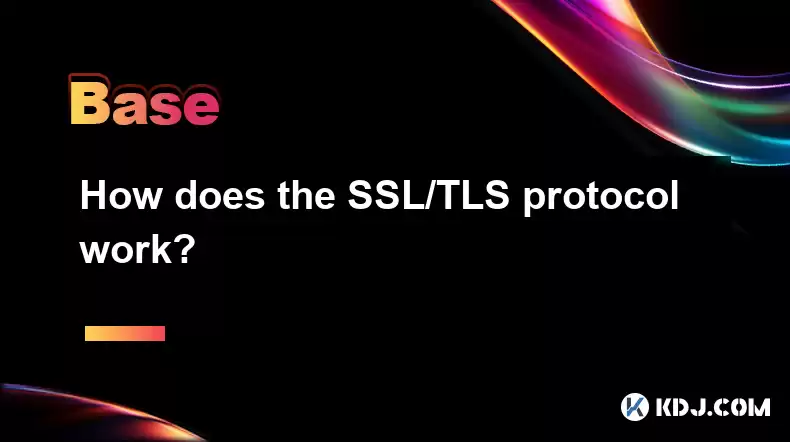-
 Bitcoin
Bitcoin $115100
1.27% -
 Ethereum
Ethereum $3675
2.71% -
 XRP
XRP $2.995
1.45% -
 Tether USDt
Tether USDt $1.000
0.02% -
 BNB
BNB $769.8
2.64% -
 Solana
Solana $168.0
3.25% -
 USDC
USDC $0.9999
-0.01% -
 TRON
TRON $0.3371
1.48% -
 Dogecoin
Dogecoin $0.2051
3.36% -
 Cardano
Cardano $0.7394
2.30% -
 Hyperliquid
Hyperliquid $38.15
0.42% -
 Stellar
Stellar $0.3966
-0.36% -
 Sui
Sui $3.486
2.93% -
 Chainlink
Chainlink $16.72
2.52% -
 Bitcoin Cash
Bitcoin Cash $568.0
4.36% -
 Hedera
Hedera $0.2440
2.59% -
 Ethena USDe
Ethena USDe $1.001
0.04% -
 Avalanche
Avalanche $22.16
2.06% -
 Litecoin
Litecoin $119.1
-0.73% -
 UNUS SED LEO
UNUS SED LEO $8.991
0.04% -
 Toncoin
Toncoin $3.232
-0.39% -
 Shiba Inu
Shiba Inu $0.00001233
2.82% -
 Uniswap
Uniswap $9.717
2.53% -
 Polkadot
Polkadot $3.664
1.85% -
 Dai
Dai $1.000
0.01% -
 Monero
Monero $281.2
-3.89% -
 Bitget Token
Bitget Token $4.350
1.55% -
 Cronos
Cronos $0.1428
5.07% -
 Pepe
Pepe $0.00001050
3.68% -
 Aave
Aave $262.3
3.54%
How does the SSL/TLS protocol work?
SSL/TLS secures cryptocurrency transactions by using a handshake to establish a secure connection, employing asymmetric and symmetric encryption, and verifying server identity via certificates from Certificate Authorities. This protects data integrity and confidentiality.
Mar 06, 2025 at 04:48 am

Key Points:
- SSL/TLS provides secure communication over a network, crucial for cryptocurrency transactions.
- The process involves a handshake to establish a secure connection using asymmetric and symmetric encryption.
- Certificates from Certificate Authorities (CAs) verify the identity of websites and servers.
- The protocol protects data integrity and confidentiality, preventing eavesdropping and tampering.
- Understanding SSL/TLS is vital for users to ensure secure interactions within the cryptocurrency ecosystem.
How Does the SSL/TLS Protocol Work?
The Secure Sockets Layer/Transport Layer Security (SSL/TLS) protocol is fundamental to securing online communication, especially vital in the cryptocurrency world where sensitive information like private keys and transaction details are exchanged. It ensures that data transmitted between a client (like your browser) and a server (like a cryptocurrency exchange) remains confidential and tamper-proof.
The process begins with a handshake, a series of messages exchanged between the client and server to establish a secure connection. This handshake involves several steps, starting with the client requesting a secure connection. The server then responds with its SSL certificate.
This certificate, issued by a trusted Certificate Authority (CA), contains the server's public key and other identifying information. The client verifies the certificate's authenticity and validity. If everything checks out, the handshake proceeds.
Next, a symmetric encryption key is generated. This key is used for encrypting and decrypting the actual data exchanged during the session. Because symmetric encryption is much faster than asymmetric encryption, this step significantly improves performance. This key, however, is only used for the duration of the session.
The client and server now use the symmetric key to encrypt all subsequent communications. This ensures that even if someone intercepts the data, they cannot decrypt it without the key. The use of the symmetric key for data transfer is the main efficiency driver of the SSL/TLS protocol. This contrasts sharply with the slower, but more secure, asymmetric encryption used in the handshake.
The SSL/TLS protocol also incorporates mechanisms to ensure data integrity. This means that data cannot be altered in transit without detection. This is achieved through the use of message authentication codes (MACs) or digital signatures, verifying that the received data matches what was sent.
Furthermore, SSL/TLS uses different encryption algorithms, offering varying levels of security. The choice of algorithm depends on the capabilities of both the client and server. The most common algorithms include AES (Advanced Encryption Standard) and RSA (Rivest-Shamir-Adleman). Keeping abreast of the latest and most secure algorithms is crucial for maintaining a high level of security.
The Role of Certificate Authorities (CAs)
Certificate Authorities (CAs) are trusted third-party organizations that issue SSL/TLS certificates. They act as guarantors of a website or server's identity. When a client connects to a server, it verifies the server's certificate against a list of trusted CAs. This verification process helps prevent man-in-the-middle attacks, where an attacker intercepts the communication and impersonates the server. The selection of a reputable CA is crucial for maintaining security.
How SSL/TLS Protects Cryptocurrency Transactions
In the context of cryptocurrencies, SSL/TLS is crucial for securing interactions with exchanges, wallets, and other services. It protects sensitive data such as private keys, transaction details, and personal information from unauthorized access and manipulation. Without SSL/TLS, cryptocurrency transactions would be highly vulnerable to eavesdropping and attacks. The integrity of the transaction is protected against malicious tampering.
The use of HTTPS (Hypertext Transfer Protocol Secure), which utilizes SSL/TLS, is a clear indicator of a secure website. Users should always look for the padlock icon in their browser's address bar before entering any sensitive information on a cryptocurrency-related website. This signifies that the connection is secured by SSL/TLS. Ignoring this precaution significantly increases the risk of compromise.
Step-by-Step Breakdown of the SSL/TLS Handshake:
- Client Hello: The client initiates the connection, specifying the supported SSL/TLS versions and cipher suites.
- Server Hello: The server responds with its chosen SSL/TLS version and cipher suite.
- Server Certificate: The server sends its SSL/TLS certificate, verifying its identity.
- Client Key Exchange: The client generates a pre-master secret and sends it to the server, usually encrypted with the server's public key.
- Change Cipher Spec: Both client and server change to the agreed-upon cipher suite for encrypted communication.
- Finished: Both client and server send a finished message, verifying the integrity of the handshake.
Frequently Asked Questions:
Q: What is the difference between SSL and TLS?
A: SSL (Secure Sockets Layer) was the original protocol. TLS (Transport Layer Security) is its successor and improved version, offering enhanced security features and addressing vulnerabilities found in SSL. While the terms are often used interchangeably, TLS is the currently active and preferred standard.
Q: How can I tell if a website is using SSL/TLS?
A: Look for "https" at the beginning of the website address and a padlock icon in the browser's address bar. This indicates that the connection is secure and encrypted using SSL/TLS.
Q: Are all SSL/TLS certificates created equal?
A: No, certificates from different CAs offer varying levels of trust and validation. Extended Validation (EV) certificates offer the highest level of assurance, indicated by a green address bar in some browsers.
Q: What happens if my connection drops during an SSL/TLS handshake?
A: The connection will fail, and the secure session will not be established. You will need to try connecting again. The handshake is a crucial first step and must be completed successfully to establish a secure channel.
Q: Can SSL/TLS protect against all attacks?
A: No, SSL/TLS is not a foolproof solution. While it provides robust protection against many attacks, vulnerabilities can still exist in its implementation or in other parts of the system. Regular updates and security best practices are essential. Phishing attacks, for instance, can bypass the security provided by SSL/TLS.
Disclaimer:info@kdj.com
The information provided is not trading advice. kdj.com does not assume any responsibility for any investments made based on the information provided in this article. Cryptocurrencies are highly volatile and it is highly recommended that you invest with caution after thorough research!
If you believe that the content used on this website infringes your copyright, please contact us immediately (info@kdj.com) and we will delete it promptly.
- Fireverse Token: Igniting a Musical Revolution in Web3
- 2025-08-07 08:27:45
- Ethereum, L2 Withdrawals, and Decentralization: A New Yorker's Take
- 2025-08-07 08:32:33
- Avalanche vs. Ruvi AI: Daily Sales Tell a Story of Crypto Disruption
- 2025-08-07 06:29:35
- DeSoc: The Crypto to Buy Now for a Decentralized Future (and Maybe 43x Gains!)
- 2025-08-07 06:50:16
- Arctic Pablo Coin: Riding the Meme Coin Wave with a Deflationary Twist
- 2025-08-07 07:18:13
- XRP Price Skyrocket? Decoding the Cryptocurrency's Next Move
- 2025-08-07 07:31:50
Related knowledge

What is the difference between CeFi and DeFi?
Jul 22,2025 at 12:28am
Understanding CeFi and DeFiIn the world of cryptocurrency, CeFi (Centralized Finance) and DeFi (Decentralized Finance) represent two distinct financia...

How to qualify for potential crypto airdrops?
Jul 23,2025 at 06:49am
Understanding What Crypto Airdrops AreCrypto airdrops refer to the distribution of free tokens or coins to a large number of wallet addresses, often u...

What is a crypto "airdrop farmer"?
Jul 24,2025 at 10:22pm
Understanding the Role of a Crypto 'Airdrop Farmer'A crypto 'airdrop farmer' refers to an individual who actively participates in cryptocurrency airdr...

What is the difference between a sidechain and a Layer 2?
Jul 20,2025 at 11:35pm
Understanding the Concept of SidechainsA sidechain is a separate blockchain that runs parallel to the main blockchain, typically the mainnet of a cryp...

What is the Inter-Blockchain Communication Protocol (IBC)?
Jul 19,2025 at 10:43am
Understanding the Inter-Blockchain Communication Protocol (IBC)The Inter-Blockchain Communication Protocol (IBC) is a cross-chain communication protoc...

How does sharding improve scalability?
Jul 20,2025 at 01:21am
Understanding Sharding in BlockchainSharding is a database partitioning technique that is increasingly being adopted in blockchain technology to enhan...

What is the difference between CeFi and DeFi?
Jul 22,2025 at 12:28am
Understanding CeFi and DeFiIn the world of cryptocurrency, CeFi (Centralized Finance) and DeFi (Decentralized Finance) represent two distinct financia...

How to qualify for potential crypto airdrops?
Jul 23,2025 at 06:49am
Understanding What Crypto Airdrops AreCrypto airdrops refer to the distribution of free tokens or coins to a large number of wallet addresses, often u...

What is a crypto "airdrop farmer"?
Jul 24,2025 at 10:22pm
Understanding the Role of a Crypto 'Airdrop Farmer'A crypto 'airdrop farmer' refers to an individual who actively participates in cryptocurrency airdr...

What is the difference between a sidechain and a Layer 2?
Jul 20,2025 at 11:35pm
Understanding the Concept of SidechainsA sidechain is a separate blockchain that runs parallel to the main blockchain, typically the mainnet of a cryp...

What is the Inter-Blockchain Communication Protocol (IBC)?
Jul 19,2025 at 10:43am
Understanding the Inter-Blockchain Communication Protocol (IBC)The Inter-Blockchain Communication Protocol (IBC) is a cross-chain communication protoc...

How does sharding improve scalability?
Jul 20,2025 at 01:21am
Understanding Sharding in BlockchainSharding is a database partitioning technique that is increasingly being adopted in blockchain technology to enhan...
See all articles

























































































